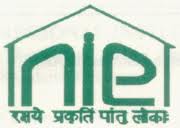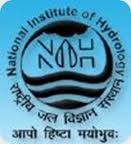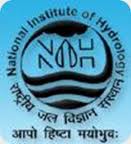/regions/haridwar-district
Haridwar District
Centre provides relief fund to drought and flood-hit states
Posted on 05 Jan, 2016 11:19 AMRelief assistance to drought-hit Maharashtra and Madhya Pradesh and flood-hit West Bengal

Minor mineral, major mafia
Posted on 29 Sep, 2013 04:05 PMPahanbarri was a small village of 3000 people in Madhya Pradesh's Hoshangabad district. The 200-year old village was known for its fertile soil, thanks to being located on the banks of the Tawa, a tributary of the Narmada river. On August 1 this year, the river changed its course, broke its bank and entered the village.

Tehri dam nears danger mark
Posted on 19 Aug, 2013 02:33 AMWater level in Tehri dam near danger mark

Regional training workshop on factoring environmental flows into integrated water resources management,NIE, SaciWATERs, CIFRI, December 6-11, 2012, Haridwar - Apply by November 15, 2012
Posted on 03 Oct, 2012 10:07 PMOrganizers: National Institute of Ecology (NIE), SaciWATERs, The Central Inland Fisheries Research Institute (CIFRI)
Venue: Gurukul Kangri University,
Haridwar (Uttarakhand)



Objective
The goal of the proposed Training Course is to educate the water resource managers (both researchers and practitioners) about the importance of environmental flows in the broader framework of aquatic ecosystem goods and services, and the approaches and methods for EF assessments.
The specific objective of the training workshop is to bring together researchers in the field of river ecosystems and the water resource managers (from different disciplines) for intensive interaction on all scientific, socio-economic, policy and institutional issues concerning environmental flow and to discuss
the requirements for assessment and implementation of the EF in water resource management projects. Another objective is to develop an outline of the course material on the subject that is appropriate for the region. The training course will include interactive discussion besides a series of lectures. Resource material will be provided.
Nectar of immortality: A film on the Kumbh Mela and its people
Posted on 18 Sep, 2012 10:03 AM'Amrit: Nectar of Immortality' is a film shot during the Kumbh Mela in Haridwar in 2010. Reputed to be the biggest such gathering of people, the Mela attracted 50 million people.
National symposium on "Water Resources Management in Changing Environment -2012", IAH, February 8-9, 2012, Roorkee
Posted on 07 Feb, 2012 02:03 PMOrganizer: Indian Association of Hydrologists (IAH)
Venue: National Institute of Hydrology (NIH), Roorkee

Description:
Water resources management requires a holistic and integrated view that considers the surface and groundwater together and also the direct human / indirect human needs. The sustainable management of water resources should base on an integrated approach linking development and protection of the natural environment, on the participation of all actors and concerned people and on the recognition of the economic and social value of water. We must promote the integration of all aspects of planning, management and protection of water resources by developing plans which aim to satisfy basic needs and to promote equitable and effective distribution of water resources, ecosystem protection and maintenance of the water cycle. Climate change, land use change and the hydrological variability of water's distribution and occurrence are natural driving forces that, when combined with the pressures from economic growth and major population change, make the water resources management a challenge. Water management plans should consider the best existing practices and the most advanced scientific breakthroughs.
Three days training course on lake conservation at NIH Roorkee, March 14-16, 2012
Posted on 02 Feb, 2012 01:48 PMOrganizer: National Institute of Hydrology (NIH)
Venue: National Institute of Hydrology, Roorkee

Description:
The increasing demand for fresh water due to ever growing population, calls for proper conservation and management of all the available fresh water resources, including lakes. Lakes need special attention as they are quite often the catalysts in the development of the region by supplying water for variety of uses such as drinking and civil water supply, industrial supply, irrigation, aqua-culture, recreation and tourism etc.
Anshan by Dr G D Agarwal at Matri Sadan, Haridwar
Posted on 27 Jul, 2010 11:26 AMForwarded to the Portal by Dr.Vijay Verma
You are well aware that Dr. G D Agarwal aged 79 years Scientist, Environmentalist, Bureaucrat and Saint is on fast unto death from 20th July 2010 at Matri Sadan, Haridwar. His fragile age will not permit to endure long days of fast. It seems we are waiting for his demise.
National River Ganga Basin Authority (NRGBA) is formed to fool people of India as this is happening since Independence.
Water quality of district Haridwar - A research report by National Institute of Hydrology
Posted on 22 Jun, 2010 08:11 AMThe study attempts to determine the water quality of all available sources of water be it surface, ground or waste water and find out the likely sources of pollution for the Hardwar district of Uttar Pradesh. The physico-chemical parameters of the water were determined. The effect of monsoon on the water quality was studied by collecting and analyzing the pre and post monsoon samples.
Adsorption of zinc in bed sediments of river Ganga - A research report by National Institute of Hydrology
Posted on 22 Jun, 2010 08:10 AMThe study attempts to determine the adsorption characteristics of bed sediments of rivers for the control of metal pollution. In particular, it looks at adsorption of zinc ions on bed sediments for the river Ganga at Hardwar. In the natural conditions of river water, suspended loads and sediments have an important function of buffering higher metal concentrations of water, particularly by adsorption or precipitation.